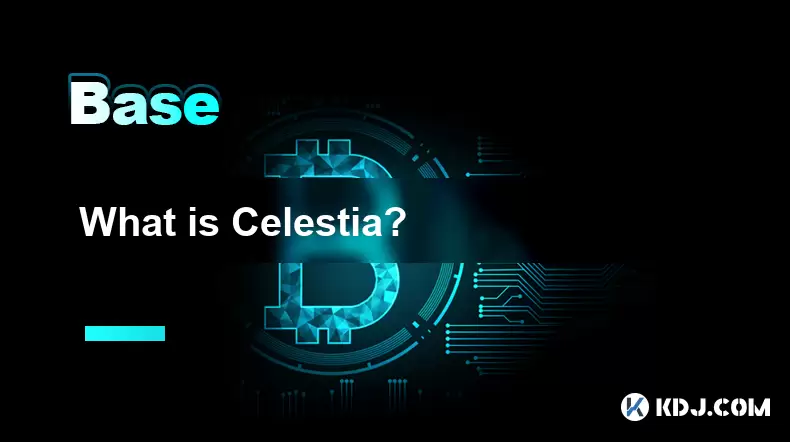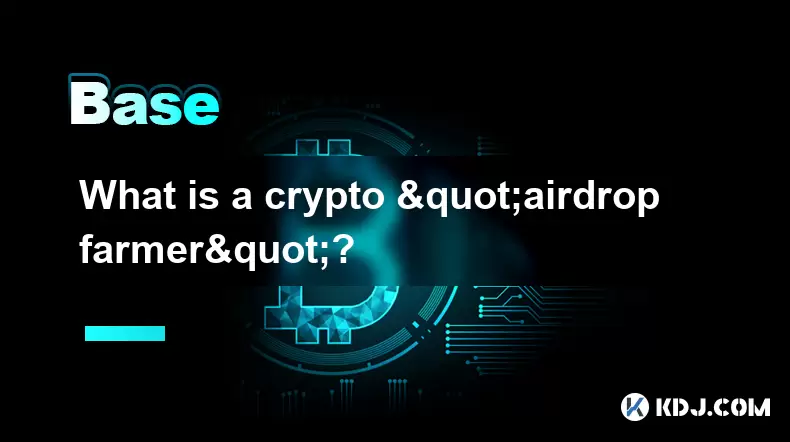-
 Bitcoin
Bitcoin $117900
0.31% -
 Ethereum
Ethereum $3766
0.28% -
 XRP
XRP $3.176
-0.31% -
 Tether USDt
Tether USDt $1.000
0.00% -
 BNB
BNB $795.6
1.51% -
 Solana
Solana $186.8
-1.09% -
 USDC
USDC $0.9999
-0.01% -
 Dogecoin
Dogecoin $0.2353
-1.33% -
 TRON
TRON $0.3226
1.49% -
 Cardano
Cardano $0.8172
-1.08% -
 Sui
Sui $4.178
3.06% -
 Hyperliquid
Hyperliquid $43.05
-3.39% -
 Stellar
Stellar $0.4367
-0.57% -
 Chainlink
Chainlink $18.62
1.47% -
 Hedera
Hedera $0.2828
6.63% -
 Bitcoin Cash
Bitcoin Cash $584.7
5.65% -
 Avalanche
Avalanche $24.81
2.53% -
 Litecoin
Litecoin $112.8
-0.88% -
 UNUS SED LEO
UNUS SED LEO $8.975
-0.08% -
 Shiba Inu
Shiba Inu $0.00001395
-1.07% -
 Toncoin
Toncoin $3.285
-1.05% -
 Ethena USDe
Ethena USDe $1.001
0.01% -
 Polkadot
Polkadot $4.123
0.76% -
 Uniswap
Uniswap $10.49
-0.18% -
 Monero
Monero $326.5
0.14% -
 Dai
Dai $0.9999
-0.02% -
 Bitget Token
Bitget Token $4.576
0.34% -
 Pepe
Pepe $0.00001247
-1.55% -
 Cronos
Cronos $0.1400
3.77% -
 Aave
Aave $295.1
-0.73%
What is Celestia?
Celestia is a modular blockchain network that separates consensus, data availability, and execution to improve scalability and flexibility for developers building decentralized applications.
Jul 27, 2025 at 01:21 am

Introduction to Celestia
Celestia is a decentralized, modular blockchain network designed to improve scalability and accessibility in the blockchain ecosystem. Unlike traditional monolithic blockchains, which handle data availability, consensus, and execution all in one layer, Celestia separates these functions into distinct layers. This modular approach allows developers to build and deploy blockchains more efficiently, without the burden of handling all aspects of blockchain infrastructure.
The core innovation of Celestia lies in its ability to offer data availability as a service. This means that instead of each blockchain needing to verify and store all transaction data themselves, they can rely on Celestia to ensure that data is available when needed. This significantly reduces the computational and storage requirements for individual blockchains.
The Modular Blockchain Architecture
Celestia’s architecture is built around the concept of modular blockchain design. This approach divides the blockchain stack into separate components: consensus, data availability, and execution. Each of these layers can be independently upgraded or replaced, offering greater flexibility and scalability.
- Consensus Layer: Celestia uses a Tendermint-based consensus mechanism to agree on the order of blocks. This ensures that all nodes in the network reach agreement on the state of the blockchain.
- Data Availability Layer: This is where Celestia truly shines. By providing a secure and scalable data availability layer, Celestia allows other blockchains to offload the responsibility of ensuring data is accessible to all participants.
- Execution Layer: Execution is left to individual blockchains or applications built on top of Celestia. This means developers can choose their own execution environment, such as Ethereum Virtual Machine (EVM) or other custom virtual machines.
This modular structure enables a more scalable and interoperable blockchain ecosystem.
How Celestia Ensures Data Availability
One of the most critical challenges in blockchain scalability is ensuring that all transaction data is available to network participants. Traditional blockchains require every node to download and verify all data, which limits scalability. Celestia solves this issue through data availability sampling (DAS).
In Celestia, light nodes do not download the entire block. Instead, they use random sampling techniques to check that the data is available. If enough samples are available, the node can be confident that the full data is present without downloading it entirely. This drastically reduces the bandwidth and storage requirements for nodes.
- Erasure coding is used to expand the block data into a larger set, allowing recovery of the full data even if some parts are missing.
- Nodes randomly sample parts of the expanded data to verify availability.
- If any part of the data is missing, nodes can raise an alert, ensuring that malicious actors cannot hide data.
This approach allows Celestia to scale to high throughput without compromising security.
Building on Top of Celestia
Developers looking to build applications or blockchains on top of Celestia can take advantage of its modular architecture. Since Celestia handles consensus and data availability, developers can focus solely on the execution layer. This makes it easier to deploy custom blockchains, rollups, and Layer 2 solutions.
To build on Celestia, developers typically follow these steps:
- Choose an execution environment, such as a rollup framework or a smart contract platform.
- Connect the execution layer to Celestia's data availability layer using the provided APIs and SDKs.
- Deploy the application or blockchain to the Celestia network.
- Use Celestia's tools to monitor and maintain the health of the application.
This streamlined development process lowers the barrier to entry for new blockchain projects and enables faster innovation.
Celestia’s Role in the Future of Web3
As the blockchain space continues to evolve, scalability and interoperability remain key challenges. Celestia addresses these issues by providing a foundational layer for data availability, enabling a new generation of scalable and efficient blockchains.
By focusing on modularity and decentralization, Celestia empowers developers to build customized blockchain solutions without the overhead of managing consensus and data availability. This opens the door to a wide range of use cases, including:
- High-throughput decentralized applications (dApps)
- Interoperable blockchain networks
- Customizable rollups and Layer 2 solutions
- Decentralized storage and content delivery systems
Celestia's architecture supports a more flexible and scalable Web3 ecosystem, where innovation is not constrained by the limitations of traditional blockchain designs.
Frequently Asked Questions
Q: Can Celestia replace Ethereum?
A: No, Celestia is not designed to replace Ethereum. Instead, it complements Ethereum by offering a data availability layer that can be used by Ethereum-based rollups and Layer 2 solutions to improve scalability.
Q: How does Celestia differ from other Layer 1 blockchains?
A: Unlike traditional Layer 1 blockchains that handle consensus, data availability, and execution together, Celestia separates these functions. It focuses specifically on consensus and data availability, allowing developers to build their own execution layers on top.
Q: Is Celestia secure?
A: Yes, Celestia uses Tendermint consensus and data availability sampling to ensure security. Its modular design also allows for upgrades to individual components without compromising the entire system.
Q: What are the use cases for building on Celestia?
A: Celestia is ideal for building scalable rollups, custom blockchains, decentralized applications with high throughput needs, and cross-chain interoperability solutions.
Disclaimer:info@kdj.com
The information provided is not trading advice. kdj.com does not assume any responsibility for any investments made based on the information provided in this article. Cryptocurrencies are highly volatile and it is highly recommended that you invest with caution after thorough research!
If you believe that the content used on this website infringes your copyright, please contact us immediately (info@kdj.com) and we will delete it promptly.
- Cryptos to Watch in 2025: Punisher Coin, Chainlink, and the Altcoin Arena
- 2025-07-27 18:30:13
- Bitcoin, Altcoins, Rebound: Navigating the Crypto Comeback Trail
- 2025-07-27 18:30:13
- Ethereum, Bitcoin, and Altcoins: A Shift in Crypto Tides?
- 2025-07-27 19:10:13
- Windtree Therapeutics' Bold BNB Strategy: A $520 Million Crypto Play
- 2025-07-27 19:10:13
- Solana, Staking, and Unilabs: What's the Buzz in the Crypto Space?
- 2025-07-27 16:50:13
- VeChain, HBAR, Remittix: Navigating the Crypto Landscape in 2025
- 2025-07-27 17:10:12
Related knowledge

What is the difference between CeFi and DeFi?
Jul 22,2025 at 12:28am
Understanding CeFi and DeFiIn the world of cryptocurrency, CeFi (Centralized Finance) and DeFi (Decentralized Finance) represent two distinct financia...

How to qualify for potential crypto airdrops?
Jul 23,2025 at 06:49am
Understanding What Crypto Airdrops AreCrypto airdrops refer to the distribution of free tokens or coins to a large number of wallet addresses, often u...

What is a crypto "airdrop farmer"?
Jul 24,2025 at 10:22pm
Understanding the Role of a Crypto 'Airdrop Farmer'A crypto 'airdrop farmer' refers to an individual who actively participates in cryptocurrency airdr...

What is the difference between a sidechain and a Layer 2?
Jul 20,2025 at 11:35pm
Understanding the Concept of SidechainsA sidechain is a separate blockchain that runs parallel to the main blockchain, typically the mainnet of a cryp...

What is the Inter-Blockchain Communication Protocol (IBC)?
Jul 19,2025 at 10:43am
Understanding the Inter-Blockchain Communication Protocol (IBC)The Inter-Blockchain Communication Protocol (IBC) is a cross-chain communication protoc...

How does sharding improve scalability?
Jul 20,2025 at 01:21am
Understanding Sharding in BlockchainSharding is a database partitioning technique that is increasingly being adopted in blockchain technology to enhan...

What is the difference between CeFi and DeFi?
Jul 22,2025 at 12:28am
Understanding CeFi and DeFiIn the world of cryptocurrency, CeFi (Centralized Finance) and DeFi (Decentralized Finance) represent two distinct financia...

How to qualify for potential crypto airdrops?
Jul 23,2025 at 06:49am
Understanding What Crypto Airdrops AreCrypto airdrops refer to the distribution of free tokens or coins to a large number of wallet addresses, often u...

What is a crypto "airdrop farmer"?
Jul 24,2025 at 10:22pm
Understanding the Role of a Crypto 'Airdrop Farmer'A crypto 'airdrop farmer' refers to an individual who actively participates in cryptocurrency airdr...

What is the difference between a sidechain and a Layer 2?
Jul 20,2025 at 11:35pm
Understanding the Concept of SidechainsA sidechain is a separate blockchain that runs parallel to the main blockchain, typically the mainnet of a cryp...

What is the Inter-Blockchain Communication Protocol (IBC)?
Jul 19,2025 at 10:43am
Understanding the Inter-Blockchain Communication Protocol (IBC)The Inter-Blockchain Communication Protocol (IBC) is a cross-chain communication protoc...

How does sharding improve scalability?
Jul 20,2025 at 01:21am
Understanding Sharding in BlockchainSharding is a database partitioning technique that is increasingly being adopted in blockchain technology to enhan...
See all articles

























































































